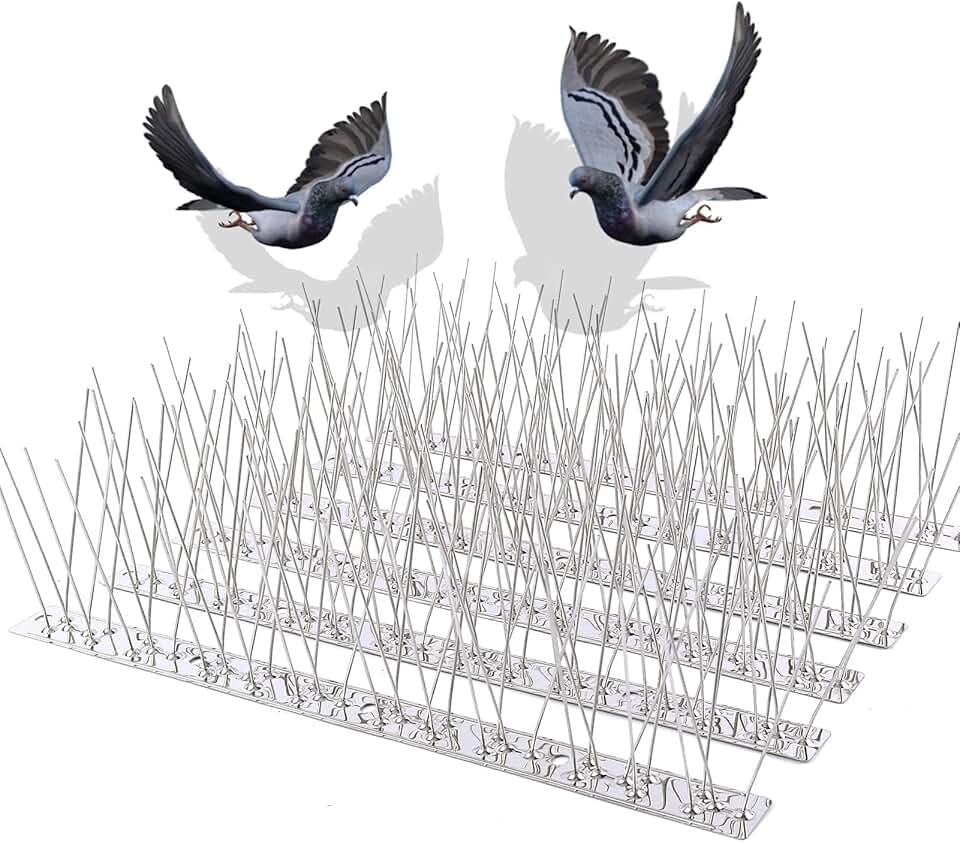In urban areas around the world, pigeons are a common sight. These birds, often referred to as “city doves” or “rock pigeons,” have adapted remarkably well to human environments. While many people enjoy their presence, large populations of pigeons can create serious problems. From unsightly droppings to damage to buildings and health risks, pigeons can quickly become a nuisance. One of the most effective and humane solutions to deter pigeons from settling in unwanted places is the installation of pigeon bird spikes.
Understanding the Problem with Pigeons
Pigeons typically congregate in locations with convenient access to food, water, and cover. Rooftops, balconies, window sills, ledges, signage, and other flat surfaces on buildings are frequently included in this. Pigeons can cause significant mess and damage when they are present in big numbers. In addition to being disagreeable, their excrement is acidic, which erodes paint, metal, and stone. Property owners eventually have to pay for costly repairs as a result of this.
Furthermore, dangerous bacteria and fungi found in pigeon droppings can cause diseases including psittacosis, cryptococcosis, and histoplasmosis. These illnesses are particularly dangerous in places like hospitals, restaurants, and homes. Pigeon nests can also obstruct ventilation and drainage systems, which leads to additional maintenance problems.
What Are Pigeon Bird Spikes?
Pigeon bird spikes are physical deterrents designed to prevent pigeons from perching or roosting on specific surfaces. These spikes are typically made of stainless steel or durable plastic and are arranged in rows along a narrow base. The spikes are not sharp enough to harm the birds but are uncomfortable and unstable for landing. As a result, pigeons avoid the spiked areas altogether.
These devices are considered one of the most humane pigeon control options because they do not trap, injure, or kill the bird spikes. Instead, they simply make certain surfaces inaccessible, encouraging pigeons to find alternative locations away from human structures.
Installation and Use of Bird Spikes
Installing pigeon bird spikes is relatively straightforward, but it must be done properly to be effective. The spikes should cover the entire surface where birds are likely to perch. Even small gaps can allow birds to nest, so full coverage is crucial. Spikes can be attached using screws, adhesive, or mounting brackets, depending on the surface material.
Common areas for spike installation include building ledges, roof edges, chimneys, window sills, gutters, signage, and light fixtures. It is essential to clean the area thoroughly before installation, removing all debris, nests, and droppings to ensure the spikes adhere correctly and deter new nesting attempts.
Benefits of Using Pigeon Bird Spikes
Using bird spikes has a number of important benefits. They provide a durable solution first. High-quality spikes require little upkeep after installation and can continue to work for many years. Over time, this makes them cost-effective.
Second, the property's visual appeal is maintained since bird spikes are discrete and can be chosen in colors that complement the building materials. For less visual impact, some manufacturers even provide transparent spike models.
Above all, bird spikes offer an ethical and non-lethal way to eliminate pests. They deter pigeons without hurting them, which is crucial for people who respect animal welfare or have to abide by laws protecting wildlife.
Limitations and Considerations
While bird spikes are highly effective, they are not a one-size-fits-all solution. In areas where pigeons have already built nests, spikes alone may not deter them. In such cases, removal of nests and possibly combining spikes with other deterrents—such as bird netting, visual repellents, or ultrasonic devices—might be necessary.
Additionally, spikes should not be used in areas where small birds like sparrows or starlings are the main problem. These birds can sometimes nest between the spikes if the spacing is too wide. Choosing the correct spike size and style based on the target bird species is critical.
Conclusion
Pigeon bird spikes are a useful, long-lasting, and compassionate method of controlling pigeon populations in cities. Spikes help lower maintenance expenses, health hazards, and property damage by keeping birds from roosting on buildings. They are a popular option for city planners, business owners, and homeowners due to their long-term advantages and ease of installation.
Pigeon spikes are a key component of any successful bird management plan, even if they are not the only possible means of controlling birds. They can prevent pigeon-related issues in buildings and public areas without endangering the birds or upsetting the ecosystem if installed and maintained properly.
